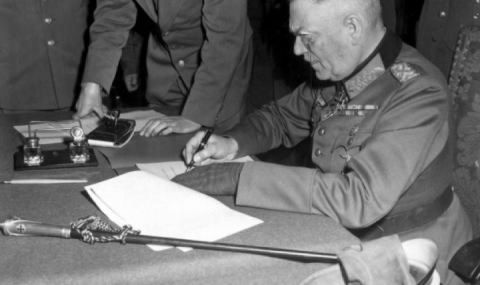On May 2, 1945, the commander of the defense and the last commandant of Berlin, General Helmut Weidling, signed the act of surrender of the German troops and surrendered with the remnants of the garrison into the hands of the Soviet army.
It should be noted that General Weidling led a carefully thought-out and well-prepared defense: 1.2 million officers and soldiers, 3,000 guns and 250 tanks. 400 reinforced concrete long-term facilities were built, including 6-story bunkers. Weidling organized the defense of the city, fighting for every building. The resistance of the Berlin garrison, however, proved doomed after General Wenk's attempt to support them with the forces of the 12th Army finally failed on April 28. General Weidling's last illusions that a miracle would happen collapsed after Hitler's suicide.
In the early hours after midnight on May 2, the radio stations of the 1st Belorussian Front received a message in Russian: “We ask for a ceasefire. We are sending negotiators to the Potsdam Bridge.”
The German officer who arrived on behalf of General Weidling reported the readiness of the Berlin garrison to cease resistance. The series of capitulations At 6 o'clock in the morning, artillery general Weidling, accompanied by three German generals, crossed the front line and surrendered.
An hour later, already at the headquarters of the 8th Guards Army, he wrote an order for capitulation: “The Führer has committed suicide, leaving to the mercy of fate all those who swore allegiance to him. According to the Führer's order, you, German soldiers, are obliged to be ready to continue the fighting around Berlin, even though your ammunition is running out and in the current situation further resistance is pointless. I order you to immediately cease all resistance. Every hour of fighting prolongs the terrible suffering of the civilian population of Berlin and our wounded. By mutual agreement with the high command of the Soviet troops, I call on you to immediately cease hostilities. Weidling, former commander of the Berlin defense district.”
The order was reproduced and, using loudspeakers and radio, was brought to the units defending the center of Berlin. Resistance in the city was gradually stopped. By the end of the day, the troops of the 8th Guards Army cleared the central part of the city of the enemy.
At 2:41 on May 7, 1945, in the city of Reims, the headquarters of Commander-in-Chief General Eisenhower, a preliminary protocol of Germany's surrender was signed. On May 8, representatives of the Wehrmacht High Command, in the presence of representatives of the Supreme Command of the Allied Forces and the Supreme Command of the Soviet Forces, signed a final act of surrender in Berlin, the implementation of which came into effect at 24:00 on May 8.
The cost of the operation was extremely high for both the servicemen of both sides and the population of Berlin. Over 80,000 Soviet soldiers and officers died in the Berlin operation, as did 2,800 Polish ones. In turn, German losses in killed exceeded 400,000 people.
Who is General Weidling?
Weidling was born into a family of doctors on November 2, 1891 in Halberstadt in Saxony. He participated in World War I as an aeronaut-observer. In 1915 He transferred to the service of airships, became commander of a “Zeppelin”. In 1919, due to the liquidation of the Air Force, he transferred to the artillery and made a career there. In the war against Poland, he was already a colonel and commanded an artillery regiment. Then he commanded an infantry division, army and tank corps.
From October 1943 to the beginning of April 1945, Weidling commanded the 41st Panzer Corps until its complete defeat. From April 10, he was commander of the 56th Panzer Corps.
